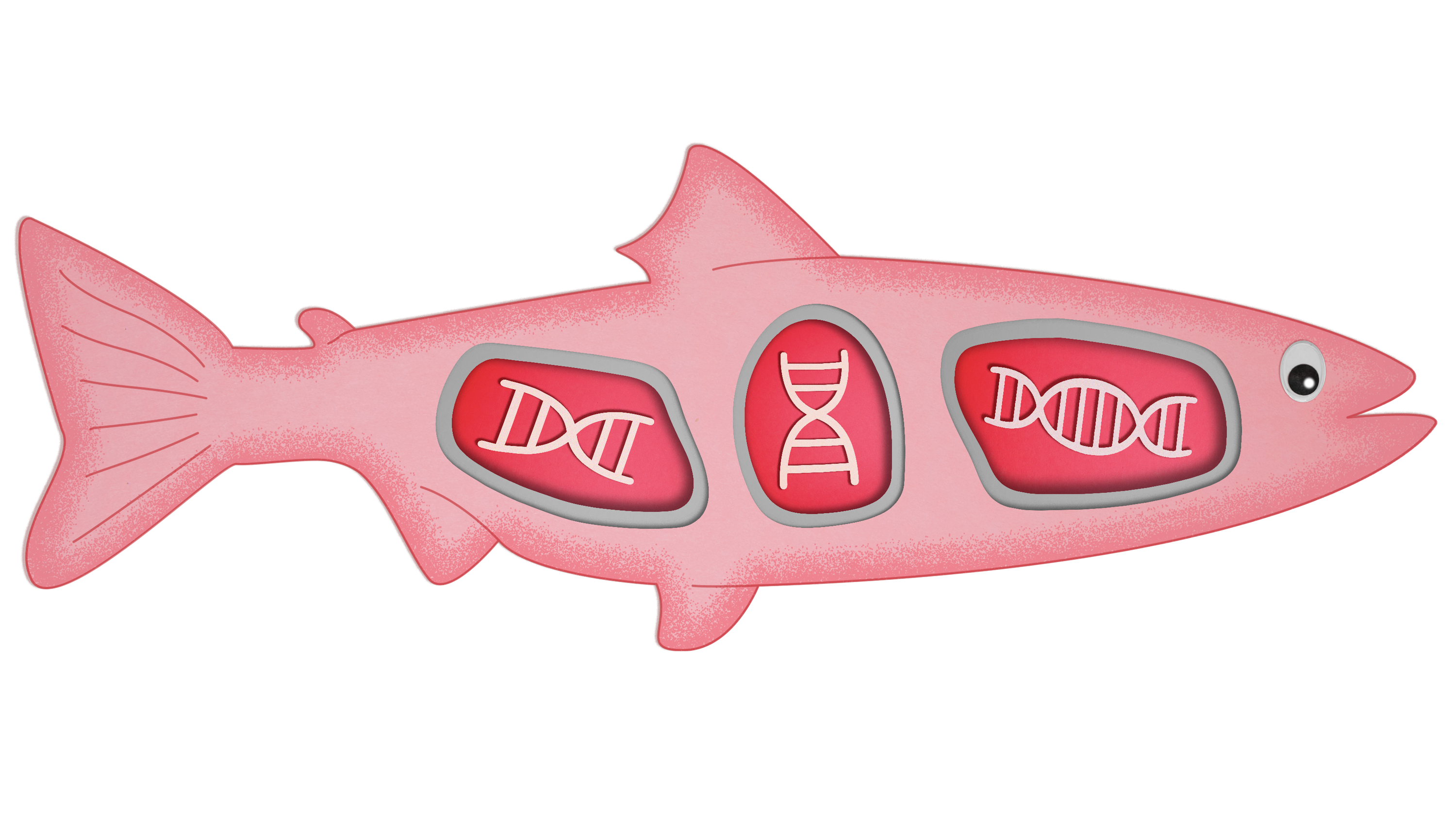What’s on the GMO menu: fast-growing salmon and slow-swimming tuna
A Massachusetts-based biotech company says its transgenic salmon are almost ready for market.

A genetically modified salmon will become the first GM food animal to go on sale in the US, according to its maker, AquaBounty, possibly launching an era of steaks and chops from creatures with modified DNA.
In the US, a number of genetically modified animals have been approved or cleared for sale. There’s the neon GloFish with added fluorescence, which you can find at a pet store. And there are a handful of goats, rabbits, and chickens engineered to manufacture drugs in their milk or eggs.
But so far, only one genetically engineered animal has been approved in the US as food. That animal, an Atlantic salmon engineered to grow faster on fish farms, took 20 years to win a nod from regulators, and then got held up for four more years over a labeling dispute. AquaBounty predicted that it would be ready to sell salmon to distributors in the US by this month.
Aquabounty’s long (and expensive) trip to the marketplace has been discouraging. Who wants their product to be denounced as a frankenfish by environmental campaigners or be prominently labeled as “bioengineered”? Yet now that the fish has won approval, it may be a “wildly important” signal to others working on genetically engineered animals, says Jack Bobo, a former board member at the company. “All GMO research on animals basically stopped for 20 years,” he says. “There was no reason to do it until something got approved.”
The Aquabounty salmon is transgenic—it has a gene from a different species (a Chinook salmon) pasted in. Now, though, with new gene-editing tools, researchers have better ways to introduce gene changes and a wider menu of possible enhancements. Already, gene editing has led to experimental pigs that resist viral infections and dairy cattle whose spots have been changed from black to gray, to thrive in hot climates.
Today, MIT Technology review is also reporting on a British company called Genus, which is pursuing the largest project yet to genetically modify large farm animals. It's using newer gene-editing tools to create thousands of pigs immune to some common, and deadly, viruses that affect barnyards.
Animal behavior is on the table too. In 2019, Japanese researchers tried changing a gene in tuna fish to slow them down. Tuna can swim at 40 miles per hour (about seven times as fast as Michael Phelps) and often die in sushi fish farms after collisions with walls.
The path to your dinner table remains a difficult one for these innovations. Activists will criticize them as enabling intensive livestock farming, and it’s true that many genetic innovations were devised to solve problems created by crowding animals together, like disease.
And the US agency that oversees genetically modified food animals, the Food and Drug Administration, is no pushover. The FDA considers alterations to an animal’s genome to be just like a veterinary drug. That means it wants evidence that the modifications do what their makers say and that they’re safe, for the animals and for us.
Ultimately, though, it will be consumers and food marketers who decide how gene editing fares in the fish and meat aisles. Will people buy salmon or pork chops slapped with labels saying they are genetically engineered? The arrival of the Aquabounty salmon to the market could help answer the question. The company is angry about being required to use such labels and says its fish are just as good as anyone’s. Still, as Bobo says, “it’s best to be transparent and hope that people don’t really care.”
Deep Dive
Biotechnology and health
How scientists traced a mysterious covid case back to six toilets
When wastewater surveillance turns into a hunt for a single infected individual, the ethics get tricky.
An AI-driven “factory of drugs” claims to have hit a big milestone
Insilico is part of a wave of companies betting on AI as the "next amazing revolution" in biology
The quest to legitimize longevity medicine
Longevity clinics offer a mix of services that largely cater to the wealthy. Now there’s a push to establish their work as a credible medical field.
There is a new most expensive drug in the world. Price tag: $4.25 million
But will the latest gene therapy suffer the curse of the costliest drug?
Stay connected
Get the latest updates from
MIT Technology Review
Discover special offers, top stories, upcoming events, and more.